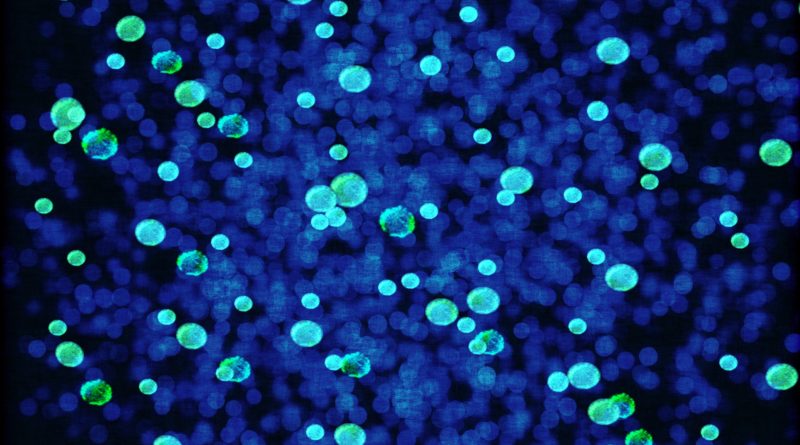How close are we to finding bio-Degradable Plastics
We need a substitute for Plastic
Plastic is everywhere from the device that you’re using to read this blog on to the clothes that you are wearing. It is a pretty awesome invention. Plastic is flexible, durable and cheap. But for all of the advantages that plastic provides, it has an obvious dark side. It has a massive carbon footprint, it wreaks havoc on our natural ecosystems and it’s so pervasive that it is literally showing up in the food that we eat and the air that we breathe. Some would argue that we just need to quit plastic. But because we’re so wrapped up in it that might be easier said than done. But what if we could upgrade to something better. How close are we to reinventing plastic?
Why is it difficult to find a Plastic Substitute
The lifecycle of most plastics starts with petrochemicals as the source and then small pellets. Plastics are polymers, poly means many and ‘mers’ means parts. Creating a plastic starts with ethylene gas. It undergoes polymerization to form polyethylene (plastic) and then molded into various shapes and forms. Polyethylene is just one of the countless types of plastics available. For different applications, we need different plastics. Whether it is housing materials, cat parts, medical equipment, or clothing, plastic is everywhere. The packaging is the largest consumer plastics. Finding a replacement that can do all these things and is still sustainable to produce, use and dispose of is certainly difficult.
BIO-Based Plastic
Bio-Based plastic is made from organic matter and is biodegradable. Biodegradable is what happens to the material at end-of-life. Can microorganisms like bacteria or fungus consume it? Can they break it down and convert it into something else. PLA (polylactic acid) is an example of a plastic that is both bio-derived and biodegradable. It is the most widely available biopolymer on the market. PLA generally will only break down in compostable environments. It needs high heat and high pressure. Industrial composting is a challenge for the same reason that recycling is. It is expensive but not profitable right away. Building massive infrastructure is required from the ground up. So a compostable PLA Cup in your backyard is not going to degrade on its own without massive heat and pressure.
Polyhydroxyalkaloids
Scientists are focused on different kinds of biopolymers. One that degrades naturally but only when you want it to and rolls off the tongue – polyhydroxyalkaloids. Polyhydroxyalkaloids are a family of naturally-occurring bio polyesters. It’s the way bacteria have evolved over billions of years to store carbon. PHAs have identified in bacteria over 100 years ago. The challenge has been how to commercialize them. Typically using bacteria to produce PHA in their cell walls required feeding them something like sugar or vegetable oils but because those are agricultural products the process can be difficult at big scales. But over a decade ago Scientists at Stanford started to toss around another idea one that has since become revolutionary. What if instead, we used methane.
Plastic produced from waste Methane
There are naturally-occurring ‘Mathenogens’ or bacteria that can consume methane and could produce PHA. Bacterias are ancient carbon storage organisms. There have been all sorts of successes, as we validate the use of waste methane. That has been a major challenge for any kind of next-generation material to be able to compete with petroleum-based plastic products. If you go to a dollar store you see items that are about a dollar, so the product by itself has to be less than a dollar along with the package. So the package has to be relatively very cheap in order to succeed in the market. To drive competing materials costs down that far, it would have to be as easy to produce, like pulling it out of thin air. That thin air is the delicious smell of methane wafting from the landfills and wastewater treatment plants right in our backyard.
Using existing waste management plants
We can use the existing infrastructure of waste management. Methanogens that live there, eat the waste and produce methane. Inside a tank called the fermenter, the bacteria live, grow and make the biopolymer. It actually happens in two stages. The first stage is reproduction where we actually want the organisms to double. In the second step, we want all of those millions of organisms to transform. Which means to take that carbon and build up the biopolymer polyhydroxy alkaloid inside their cell walls. Once they are fat and happy we basically have to pull the polymer out of their cell walls. Through the harvesting process, we remove the cell mass as we don’t need that part and we are left with the powder. But in order for it to be turned into various products, it then needs to be in pellet form.
Mass producing PHA’s
PHAs can also biodegrade in your backyard compost, even in environments where no oxygen is present. It could give producers and other people in the value and supply chain reassurance, that it won’t be polluting indefinitely for hundreds or thousands of years. So all we need to do is mentor some methane munching microbes to produce PHA at scale using waste facilities all over the world. Gradually build the capacity we need to compete with petrochemical plastics and sit back and watch as our landfills become gold mines. We are having a technological leap forward so the technology of the next generation of plastics is already here. It’s the infrastructure that we have to develop around it.
